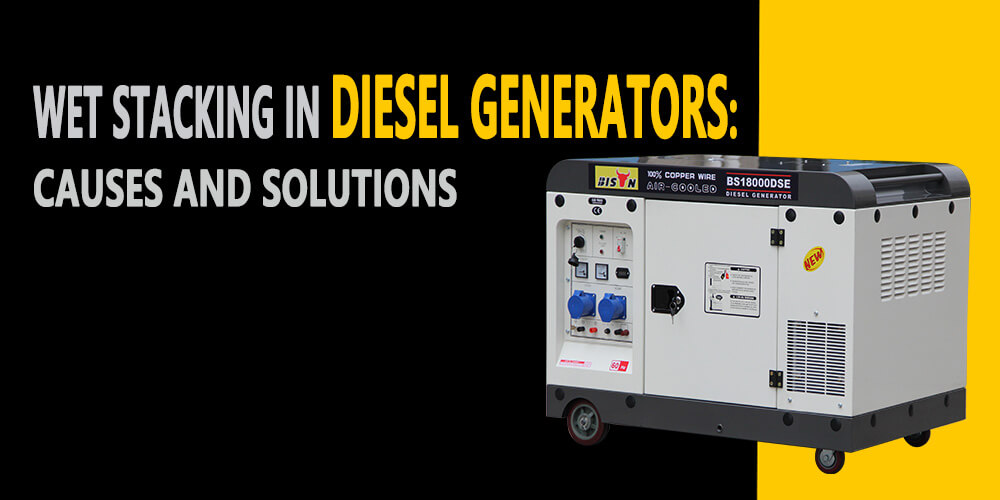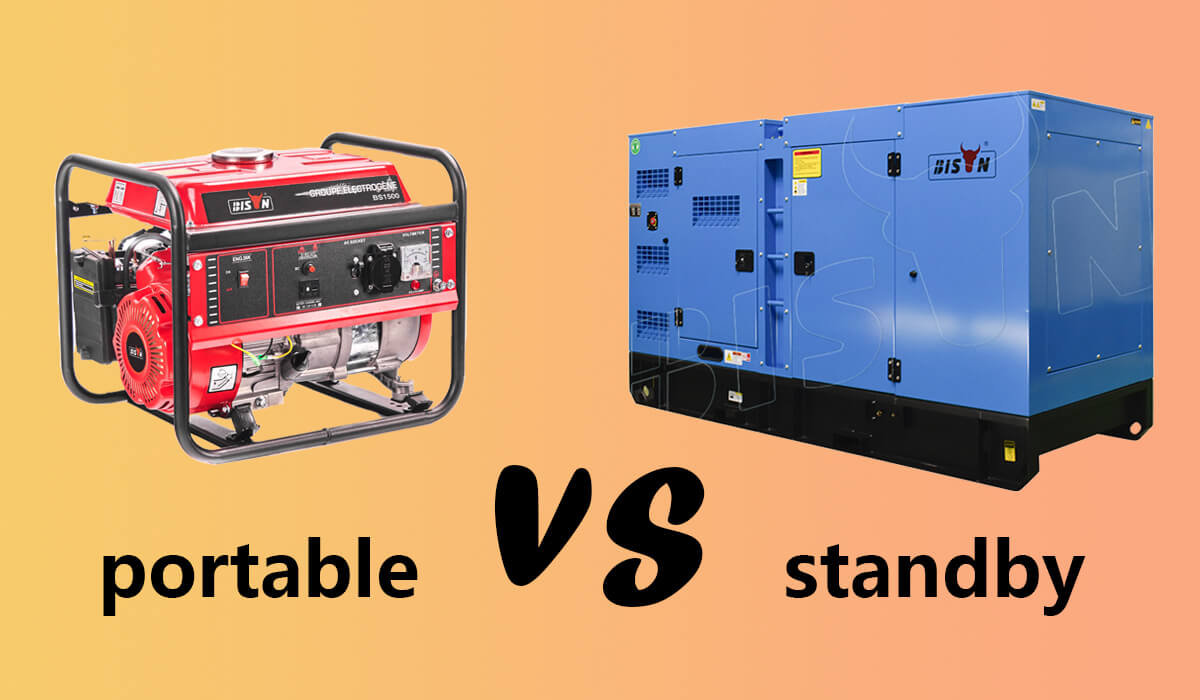temporary genset when emergency
- BY BISON
Table of Contents
What qualifies as emergency gensets?
To begin with, let’s briefly explain the concept of emergency gensets.
As defined by environmental regulations, an emergency generator is essentially a fixed reciprocating internal combustion engine that provides power during an outage. They are crucial for commercial establishments such as shopping centers, office complexes, hospitals, data centers, hotels, police stations, and residential buildings. Their role is vital in maintaining safety, operational systems, and communication. For industrial setups, these gensets ensure that the machinery keeps functioning, thus preventing any monetary loss. In essence, an emergency gensets come into play during emergency scenarios.
The term ‘stationary reciprocating internal combustion engine‘ might sound complex. You might even be wondering if you possess China portable gensets. To clarify, if your lights, phones, and internet continue to function during a power cut, it’s likely that you have some form of emergency gensets at your disposal!

What environmental regulations apply to emergency gensets?
As previously stated, environmental regulations can vary depending on your location, be it state, county, region, or city. They also hinge on your specific operation, generator(s), type of fuel, and so on.
However, not every industrial or commercial establishment needs to concern themselves with all the regulations we discuss here.
Therefore, while this guide is beneficial, it shouldn’t be viewed as the ultimate authority on environmental regulations pertaining to emergency gensets. If you need assistance in understanding the specific environmental regulations that apply to your facility’s backup genets, it’s advisable to either delve into the regulations yourself or consult a professional expert.
With that in mind, here are the four most frequently encountered areas of environmental regulations applicable to power genets across various facilities:
- Air Quality Permits
- Aboveground Storage Tank (AST) Registrations
- SPCC Plans
- EPCRA Tier II Reporting
If you’re not well-versed in environmental regulatory affairs, these terms might seem daunting. Hence, let’s examine each point in detail to provide a clearer understanding.

Emergency Standby Gensets and Air Quality Permits
Generally, environmental compliance for emergency genets is mandated by the area where the generator is set to function. This is usually your area’s Department of the Environment, but in some cases, counties and cities will develop their own environmental compliance procedures, which may supersede district requirements. Conversely, all emergency genets must comply with the appropriate state legal requirements, although depending on your local government you may not need to obtain a permit.
Let’s discuss a few key points here:
Pre-construction and post-construction air permits
In many cases, air permitting needs to be considered before construction or installation even begins. It is common to find permits that apply to the installation and start-up of emergency standby genets , which may sound similar to pre-construction permits.
Instead, there are air permits tailored specifically for once the equipment is up and running, which sounds like an operating permit.
This will depend on where your property/facility/building is located as air quality permits are handled differently from place to place.
emission limit
Your emergency generator may need to comply with air emission regulations required by your county or city. This could mean reporting emissions of nitrogen oxides, sulfur oxides, carbon dioxide, or other air pollutants on an annual or semi-annual basis. These emissions can vary depending on the size of the emergency generator, the type of fuel burned, and how long the generator is running, which brings us to…
Emergency Standby Generator Run Hours
Regardless of regional regulations, depending on various considerations, your emergency generator must be kept below 100 hours per calendar year for non-emergency use (maintenance or testing). Also be aware that other agencies may have stricter regulations, meaning there may be severe limits on how often you can test and maintain your backup generator. So, cherish every minute!
Conversely, when running for emergency reasons, such as a power outage, you will generally be subject to a higher runtime limit. This threshold, commonly denoted in hours, typically extends from a few days to weeks regarding the duration an emergency generator can operate.

Additional Air Quality Permit Considerations
Below are four other key compliance areas that we commonly see when it comes to emergency gensets.
It’s essential to adhere to the genset manufacturer instructions for emissions-related maintenance when performing preventive upkeep on emergency gensets.
You may be required to use only low-emission fuels to fuel your emergency generator and may be required to provide proof of records for said fuels.
In certain locations, there may be a requirement to equip an emergency generator with the Best Available Control Technology (BACT). This could possibly involve the installation of a particulate filter or scrubber.
Diesel & Natural Gas Gensets and Air Permits
It’s worth mentioning that natural gas emergency gensets tend to burn more efficiently and cleaner than diesel gensets. Natural gas is considered “cleaner” in terms of NOx and SOx emissions, and since NOx emissions play a very important role in air permitting thresholds, how you fuel your emergency generator can greatly affect you air permit requirements.

Generator Fuel Sources & Regulatory Considerations
We briefly discussed the idea that the type of fuel used in emergency gensets can influence air regulations. Can this fuel choice affect other regulatory matters as well? Undoubtedly.
The fuel option for your gensets significantly affects subsequent considerations. Similarly to how a small generator for a home can operate on gasoline, propane, or natural gas, an industrial or commercial facility’s generator can be powered by various fuels, typically diesel or natural gas.
The following three environmental regulatory concerns generally apply only to emergency gensets running on diesel, but it can vary.
Registrations for AST/UST Backup Generator Fuel Tanks
Emergency gensets require fuel to operate and most backup gensets use either diesel or natural gas. If natural gas is the fuel source, it’s usually supplied through piping connected to a local utility provider. If diesel is used, it needs to be stored in a tank, which could be a standalone tank with piping to the generator or an integrated belly tank beneath the generator.
Regulations in certain areas may necessitate the registration of fuel tanks for emergency planning and prevention and control of fuel leaks. Registration might involve requirements for spill prevention planning, spill response, tank design, tank inspections, leak detection, and secondary containment standards.
There tends to be a difference in registration and operating requirements. Generally, aboveground storage tanks (ASTs) are simpler to register and come with fewer requirements, while underground storage tanks (USTs) are more challenging to register and have additional requirements.

Fuel Tanks for Emergency gensets & SPCC Plans
If you have an AST or UST at your commercial or industrial facility, you might be subject to SPCC regulations.
SPCC (Spill Prevention, Control, and Countermeasure) Plans are mandatory for any US facility that meets certain criteria, including:
Being a Non-Transportation Based Facility
Producing, Storing, Processing, Transferring, Distributing, Using, or Consuming Oil (plus a few other considerations)
Possessing over 1,320-gallons aboveground or 42,000-gallons belowground storage capacity
While there are more criteria and considerations, if these three apply to you, it’s highly likely you’ll need an SPCC Plan.
If you own a single, small generator, this may not concern you. However, if you have a single large generator or several small backup gensets, you could quickly find yourself within the scope of SPCC regulatory considerations.
The BISON company’s experience
China BISON has industry experts focused on commercial generator sets with in-depth industry knowledge to help you choose the right generator for your needs.
We are an industry leader in manufacturing gensets and serve the needs of many businesses, including commercial, industrial, medical, agricultural, and universities. This includes hospitals, good living centers, nursing homes, hotels, airports, resorts, restaurants, retail centers, manufacturing, production, and more.
We only sell top-rated generator sets to bring you excellent value sets that fit your budget.
China BISON gensets are thoroughly inspected and verified to ensure you are purchasing a quality generator you can trust. If a generator does not meet industry standards, we make any necessary repairs or modifications and thoroughly test each generator before sale. This ensures a complete turnkey generator ready to go!
With China BISON wide selection of generator sets, we are confident we can find the model that best suits your operation’s needs and budget.
Please don’t hesitate to contact us with any questions or concerns to learn more about the BISON experience and the level of quality of the products and services we provide.
Temporary gensets FAQ
What kind of generator do I need in an emergency?
Consider a large emergency portable generator (6,000-8,000 watts) if you want to thrive and not just survive. You can run all the essentials plus extras like microwaves, washing machines, and coffee makers.
How does an emergency generator work?
Emergency generators are backup power systems that operate automatically. Within seconds of a utility power outage, the automatic transfer switch senses the power loss, gives commands to the generator to start, and transfers the electrical load to the generator. The emergency generator started powering the circuit.
What is the difference between a generator and an emergency generator?
While generators are less expensive than emergency systems, they are slower to respond to outages. The most significant difference between the two generator types is that generators are required by law to have 60 seconds to transfer the load automatically. In contrast, emergency systems have a 10-second time requirement.
contact us
Please complete our contact form and we will soon get back to you with expert advice.
business
Get in touch to speak with our experts!

Why does the genset generate shaft current?
This blog explores the main causes of genset shaft current, its impact on performance and life, and effective solutions for detecting and preventing the problem

Precautions for oil used in diesel gensets
Main points of using diesel gensets oil: maintain the oil level, choose the correct oil, dispose of waste oil, ensure safe & efficient operation of the generator.

wet stacking in diesel generators: causes and solutions
BISON explores the causes and effects of wet stacking, its impact on diesel generator performance, and offers practical solutions to lessen these effects.

How to maintain an engine-genset ?
Want to know how to maintain an engine-generator set? Then read this guide by BISON. It contains everything you need to know about maintaining an engine-generator set.

Replace the three filter elements of the diesel genset
Learn how to replace the three filter elements of the diesel generator set with easy to follow steps. Let’s get started!

portable vs standby generator
This article explores the key differences between portable and standby generators, analyzing their strengths and weaknesses to help you decide
